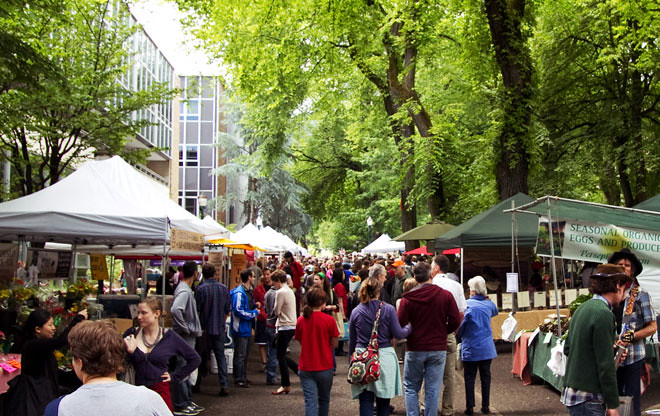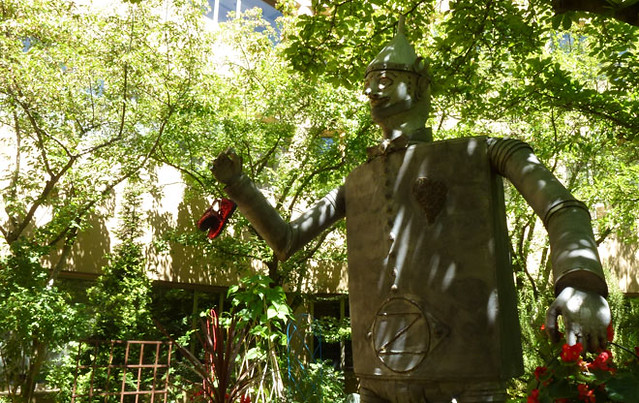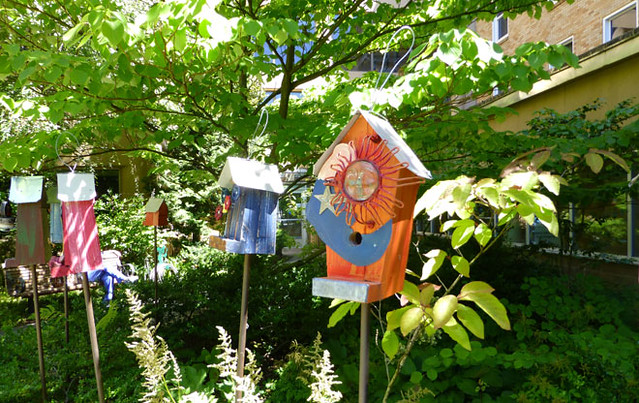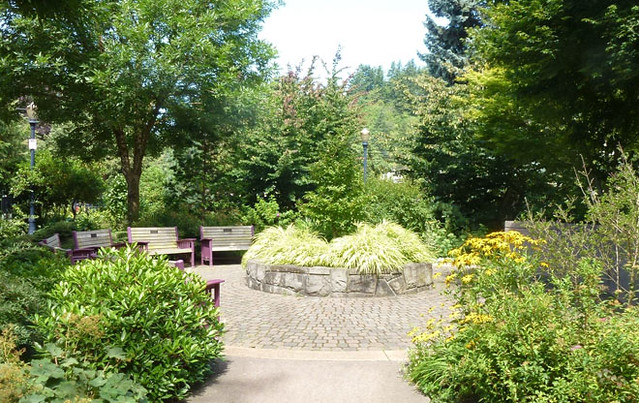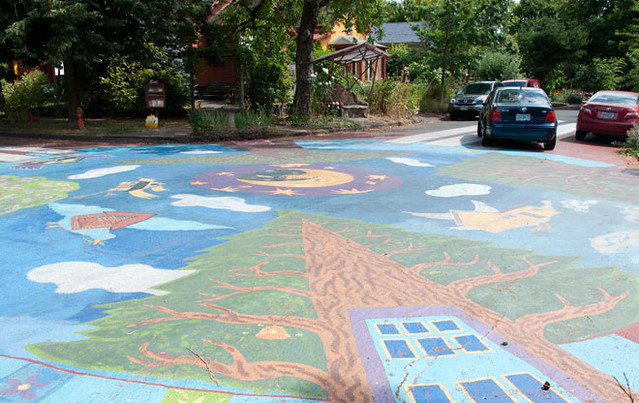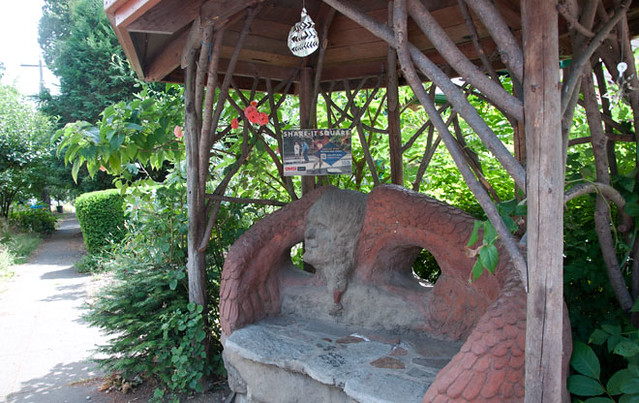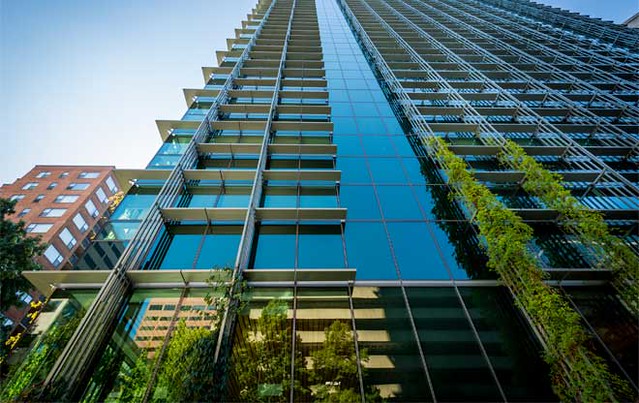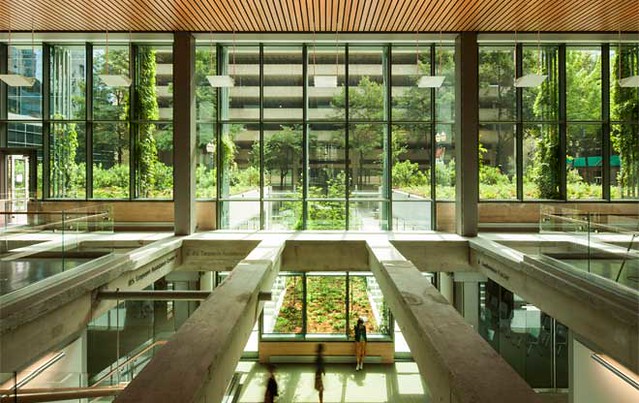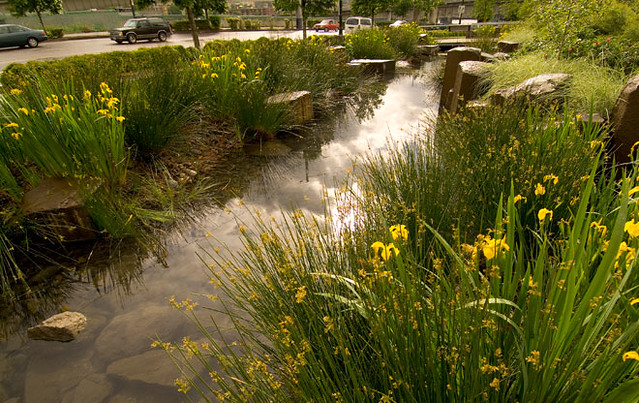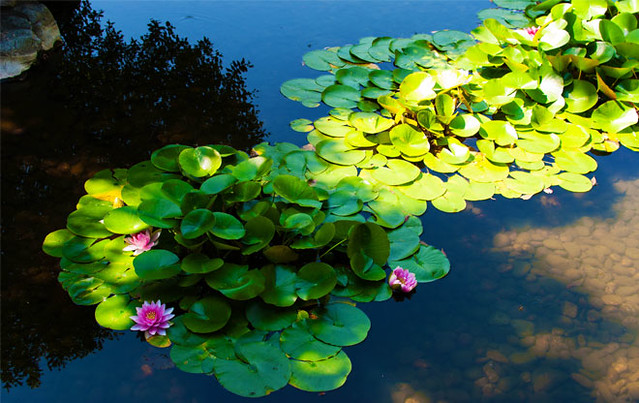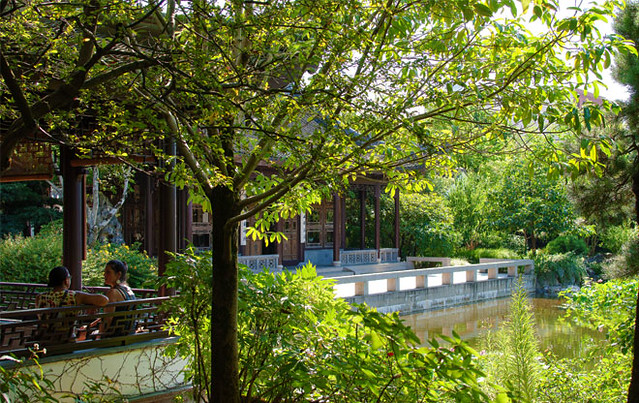New guide from ASLA highlights urban green, literally, in Portland

Posted October 27, 2014 at 2:00PM
As many readers know, I am a huge fan of the American Society of Landscape Architects and their leadership on thoughtful ways to integrate nature into our cities. It’s easy to take nature for granted when we are in the middle of it, but that’s a mistake: After decades of suburban sprawl, we’re finally on a more urban trend in the US. That’s a very good thing, but it’s easy to forget as we add more urban development to our cities that we humans are biophilic creatures. We need green along with the gray, though in cities we need it to be designed to support rather than supplant urban function. ASLA is better than any other organization I know at showing how it’s done best.
To that end, the organization has a growing suite of educational products (not least of which is the Society’s terrific blog, The Dirt). One of my favorites is its new series of online Landscape Architect’s Guides to major American cities. Clicking your way through these virtual tours of both well-known and hidden green gems in highly urban Washington, DC, Boston, and now Portland, Oregon is like being immersed in beauty while learning from one positive example after another how nature’s many functions enhance cities for people and the planet.
The Portland guide has plenty of context and hits all the obvious spots such as Forest Park, one of the nation’s largest urban forest reserves; the 410-acre, multi-faceted Washington Park (including the impressive Hoyt Arboretum); and others. But my favorite parts of the site are the ones that introduce us to smaller, neighborhood-scaled spaces.
The guide’s chapter on city spaces designed to support wellness and healing was the first to catch my eye. For example, the Children’s Garden at Legacy Emanuel Medical Center, pictured just above, seeks to promote both clinical therapeutic activities and relaxation in an enclosed courtyard available to patients, family members, staff, and the public. Brian Bainnson writes in the guide:
“On any given day you will see children who are patients enjoying time in the garden with their families, staff taking a break on a shaded bench, or a therapist doing an activity with a patient amid the foliage . . .
“The garden provides a place for mothers in early stages of labor to spend time with their families. Families with members in the cardiac unit also can spend time in the landscape while their loved ones receive critical care. The terrace is a place for staff to take breaks, eat a quick meal, or have a meeting with colleagues.”
The Children’s Garden is currently the site of research to measure its beneficial effects on certain categories of patients.
Another kind of healing experience is provided by the Portland Memory Garden, a space in nature designed specifically as a safe haven for people with Alzheimer’s disease and other forms of dementia. According to Bainnson, the garden is not only restful for patients and caregivers but also “includes specific plants and paving laid out to support the reduced abilities of those with dementia, as well as elements that may stimulate pleasant memories.”
The Memory Garden is a part of the larger Ed Benedict Park in southeast Portland. The fully enclosed space contains places for both sun and shade and has benches specifically designed to be easy for people with limited abilities to get in and out of. It also has a prominent gated entry that “allow[s] a caregiver to close the garden to promote safe wandering without worry.”
Here are some more images, from other parts of the guide, with brief descriptions by me underneath:
The street intersection that has come to be known as Share-It Square (a pun, since it’s located along Sherritt Street) is redesigned and repainted annually by community residents. (The Project for Public Spaces has long maintained that one of the great benefits of good placemaking lies in the community involvement.) It is ringed by related small-scaled community spaces, including a striking bus stop bench sculpted with wings and a woman’s face. A Portland ordinance allows community street painting throughout the city if 80 percent of residents within two blocks approve.
The LEED-platinum Edith Green – Wendell Wyatt Federal Building is projected to achieve a 50 percent reduction in energy use compared to Portland’s previous federal building and a 60 percent water use reduction compared to that required Oregon’s building code. I love the way the growing green wall contrasts with and softens the steel-and-glass modern building and how the design brings outside greenery into the interior space. (Readers of a certain age will also appreciate the interior 3-D art installation depicting the sound wave of the song “Louie, Louie” made famous in the 1960s by Portland locals The Kingsmen.)
It wouldn’t be environmentally progressive and notoriously wet Portland without outstanding examples of green infrastructure to control stormwater flows. This image is from the Rain Garden at the Oregon Convention Center, part of a sophisticated system designed to collect, clean, and retain all stormwater runoff from the Convention Center building’s massive expansion roof.
Finally (for the purposes of this article), the Lan Su Chinese Garden occupies one block of Portland’s Chinatown. According to Robin Wilcox, writing in the guide, 65 Chinese artisans from Portland’s sister city Suzhou lived in Portland for more than a year while they constructed the garden.
The Landscape Architect’s Guide to Portland includes hundreds of images; highly informative and accessible descriptions; printable bike and Google maps; and suggested tours by city district. People will be able to view the guide on their smartphones, tablets or desktop computers. Its purpose is well summarized in The Dirt:
“The guide provides both Portlanders and the millions of tourists who visit Portland annually a deeper understanding of why Portland is one of the most livable and sustainable cities in the world. The guide is also meant to educate city leaders, urban planners, and designers across the US and around the globe.”
It also serves as an outstanding catalog of the many ways nature can be integrated into highly urban places. The guide can be accessed here.
Move your cursor over the images for credit information.
Related posts:
- Meet the original 'High Line' (July 14, 2014)
- Agriculture Department to demonstrate green infrastructure, organic farming in DC 'outdoor museum' (June 27, 2014)
- The many benefits of street trees and urban greenery (excerpted from People Habitat) (April 23, 2014)
- Your neighborhood (or mine, or anyone's) after nature's jungle takes over (March 31, 2014)
- How green infrastructure investments can create commercial property value (December 19, 2013)
- Boston's Emerald Necklace sets the standard for linked city parks (November 15, 2013)
- The coolest green infrastructure you are likely to see (November 27, 2012)
- New online guide highlights the (sometimes hidden) beauty of Washington, DC (September 24, 2012)
